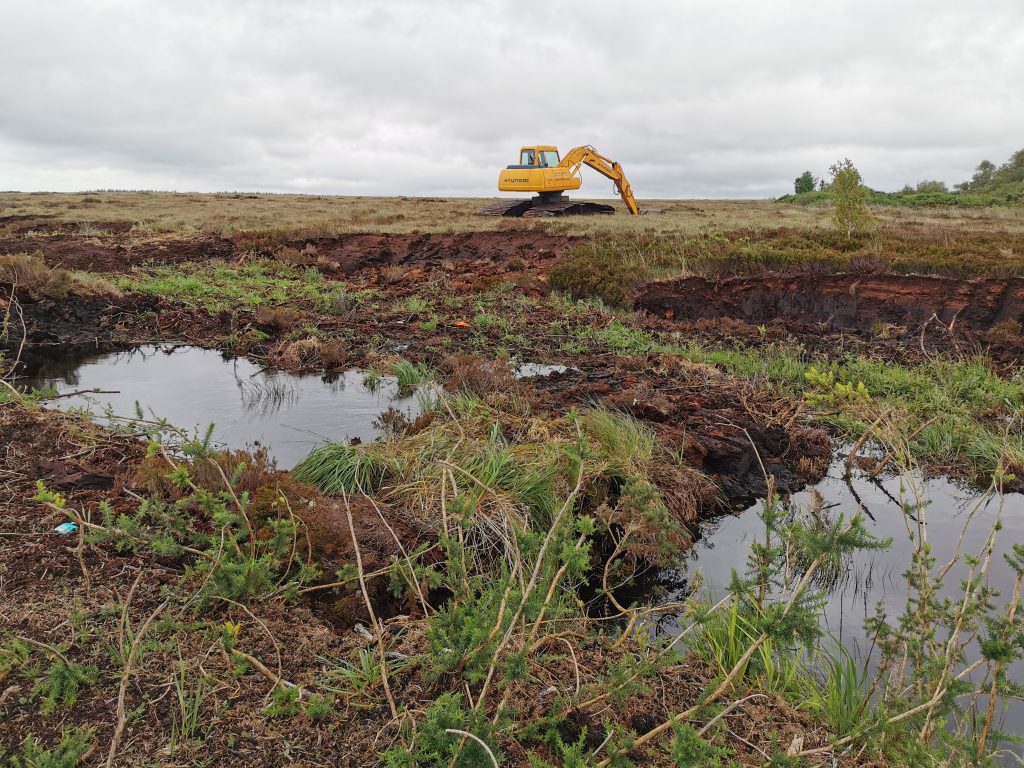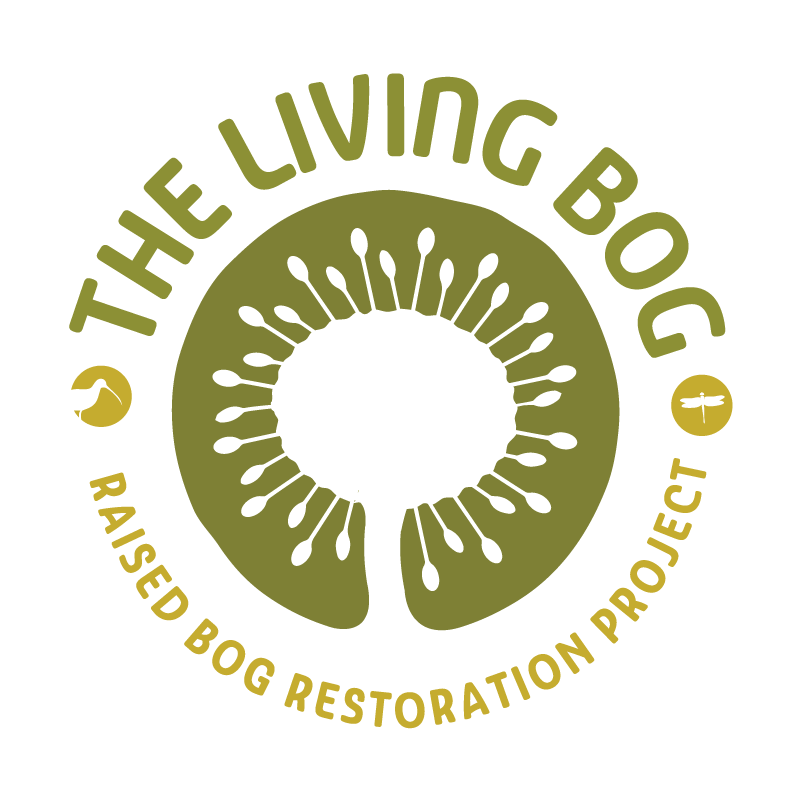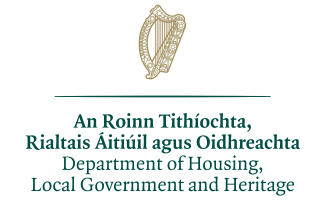LIFE on Carrownagappul Bog
LIFE DURING LIVING BOG

A Living Bog restoration machine takes a well deserved rest. In the foreground, a dam installed across a drain on the Cutover of Galway’s Living Bog. Pic: Ronan Casey.
LIFE BEFORE LIVING BOG
According to the survey results (Raised Bog Monitoring Project 2013 (Fernandez et al.)) carried out before The Living Bog came on the peatlands scene, Active Raised Bog covered 28.07ha (8.68%) of the high bog area on Galway’s Living Bog. High quality Active Raised Bog consists of both central ecotope and active flush. High quality Active Raised Bog comprises only 4.12ha, consisting of both central ecotope (2.74ha) and active flushes (1.38ha). The micro-topography of central ecotope consists of pools, low hummocks, high hummocks, hollows and lawns, and the wet ground is mostly very soft to quaking.
The pools are generally large and interconnecting, with substantial S. cuspidatum cover and only occasional algae, and they cover in the range of 11-25% of the ecotope. S. papillosum and S. magellanicum are frequent at pool edges, while S. capillifolium dominates the interpool hummocks. Hummocks of S. austinii and S. fuscum are also present, though rare.
Total Sphagnum cover is in the range of 76-90%. In common with much of the high bog, the central ecotope was showing the effects of a recent fire event, with dead Sphagnum hummocks, dead Calluna vulgaris stems, bare peat and an almost total absence of Cladonia species all current features.
Active flushes at the site consist of pools, low hummocks and hollows. Hummocks of Aulacomnium palustre are common throughout, while other flush indicators include Vaccinium oxycoccus, Empetrum nigrum and Andromeda polifolia. One of the two active flush areas mapped includes a substantial cover of scrub and small trees. The species here include Betula pubescens, Ulex europaeus, Salix sp., Pinus (contorta?), Rubus fruticosus and Juncus effusus. Total Sphagnum cover is in the range of 34-50%.
Degraded Raised Bog covers 295.41ha (91.32%) of the high bog area. It is drier than Active Raised Bog and supports a lower density of Sphagnum mosses, although Sphagnum cover is in the range of 30- 40% in the wettest of the sub-marginal community complexes recorded, and between 26-33% in some of the other wetter complexes. Degraded Raised Bog has a less developed micro-topography, and permanent pools and Sphagnum lawns are generally absent. Some good quality pools are present, however (in the range of 11-25% cover) in one of the wetter community complexes, while in other complexes most of the pools are tears, occupying less than 5% of the complex area.
Restoration works, in the form of drain blocking on the high bog, have taken place at the site, but the high bog is extensively drained and the greater part of the drainage network remains unblocked. Several drains in the southern section of the high bog have been dammed, and the positive effects of this action have been recorded in the present survey, with a 9.87ha increase in Active Raised Bog habitats, at the expense of former sub-marginal ecotope. These improvements were recorded over a substantial part of the southern section of the bog. Improvements were also seen in the mapping of some wetter community complexes in the areas concerned.
The current conservation objective for Carrownagappul Bog is to restore the area of Active Raised Bog to the area present when the Habitats Directive came into force in 1994. In the case of Active Raised Bog, the objective also includes the restoration of Degraded Raised Bog. The Area objective for Active Raised Bog is 73.06ha (comprising 64.55ha on high bog and 8.51ha on cutover).
The objective in relation to Structure and Functions (S&Fs) is that at least half of the Active Raised Bog area should be made up of the central ecotope and active flush (i.e. the wetter vegetation communities). These values have been set as Favourable Reference Values. Degraded Raised Bog still capable of regeneration should be, according to the interpretation manual, capable of regeneration to ‘active raised bog’ in 30 years if appropriate measures are put in place (i.e. no major impacting activities are present and any necessary restoration works are implemented).
In the past the habitat area was considered to be all high bog not considered to be active, but this is now not accepted as much of the high bog can no longer be restored to active. The remaining non-active high bog is considered supporting habitat for the Annex I habitats on the high bog. This supporting habitat is an essential part of the hydrological unit necessary to support Active and Degraded Raised Bog habitats. The restoration of suitable cutover areas is essential for Active Raised Bog to achieve the favourable conservation condition at the site. Nevertheless it is acknowledged that a long period of time (i.e. over 30 years) may be needed after appropriate restoration works are undertaken on the cutover areas for the habitat to develop.
Restoration works along the western cutover of Killyconny Bog SAC indicate the occurrence of pioneer ‘active raised bog’ vegetation 8 years after these were undertaken. Based on the close ecological relationship between Active Raised Bog, Degraded Raised Bog and Rhynchosporion depressions, it is considered that should favourable conservation condition for ‘Active Raised Bog’ be achieved on the site, then, as a consequence, favourable conservation condition for the other two habitats would also be achieved.





